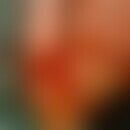Synonym(s)
DefinitionThis section has been translated automatically.
Echinocandins are semi-synthetic antimicrobials for intravenous use only. Chemically, they are lipophilically substituted cyclic polypeptides (lipopeptides) obtained from fungal cultures. Echinocandins are only slowly metabolically eliminated.
ClassificationThis section has been translated automatically.
Important representatives of this group of substances are:
You might also be interested in
Pharmacodynamics (Effect)This section has been translated automatically.
Echinocandins specifically inhibit the synthesis of 1,3-β-D-glucan. The inhibition of the enzyme glucan synthase leads to an inhibition of the glucan fibrils which, together with chitin, form the basic structure of the cell wall of fungi. The lack of glucan fibrils leads to a dysbalance of the cell wall.
Spectrum of actionThis section has been translated automatically.
Echocandins have a fungicidal effect on shoot fungi, but only a fungistatic effect on askomyotic moulds. Due to the selective mechanism of action, the broad spectrum of action on shoots and moulds and the good compatibility of the substances is justified. Resistances are rare. It is important that Echinocandine is effective against the fungus Pneumocystis jiroveci (Pneumocystis carinii).
IndicationThis section has been translated automatically.
Severe esophageal candidiasis, invasive candidiasis with candiemia.
Note(s)This section has been translated automatically.
Since basidiomycetes and mucoraceae have only little glucan in the cell wall, they are per se resistant to echinocandins.
In comparison with amphotericin B and triazole antifungals, echinocandins are well tolerated. Possible side effects are infusion-associated disorders resulting from histamine release and in the worst case leading to anaphylactoid reactions.
LiteratureThis section has been translated automatically.
- Farm H Echinocandine. In: Hof H, Schlüter D, Dörries R, published by Duale Reihe Medizinische Mikrobiologie. 7th, completely revised and extended edition. Stuttgart: Thieme p. 609
- Letscher-Bru V, Herbrecht R (2003) Caspofungin: the first representative of a new antifungal class. J Antimicrob Chemother 51: 513-521
- Smith K et al (2003) Resolution of azole-resistant oesophageal candidiasis in an AIDS patient after treatment with caspofungin. AIDS 17: 448-449
- Walsh TJ (2002) Echinocandins--an advance in the primary treatment of invasive candidiasis. N Engl J Med 347: 2070-2072




